The Daily Agenda: Have you ever seen the rain?
Tree equity in Tucson ... A contested development moves forward ... Ballot fraud countermeasure fails to advance.
It looked like the start of monsoon season Tuesday night, with parts of the Vail area recording about 1.5” of rainfall.
But don’t get too excited. No rain was recorded at the Tucson International Airport, the site of the official rain gauge, meaning Tucson’s official rainfall total is still zero.
If it feels like this year’s monsoon season is off to a late start, you’re absolutely right.
June isn’t typically a robust month in terms of rainfall, but we usually get a little something. In fact, the last time we had a June without even a the slightest hint of rain was 2020, and we all remember what a wonderful — and dry — year that was (total rainfall in Tucson was just 1.62”, the lowest recorded in the state since 1924.)
So, since we’ve all got rain on the brain, what better time to talk about water?
At least that’s what several hundred experts, students, educators and concerned citizens from around the world thought when they gathered this week for the University of Arizona’s Water Resources Research Center’s annual conference.
Dozens of panelists offered thoughts on water quality, farming practices, policy, technology and more, all focused exclusively on solutions to the state’s water challenges. Southern Arizona was well-represented in the speaker lineup and we tuned into a handful of presentations about local efforts.
In the spirit of willing our beloved monsoon storms into existence, today we’re going to focus on stormwater and the City of Tucson’s green stormwater infrastructure program.
Green stormwater infrastructure — also referred to as GSI or passive rainwater harvesting — mimics nature, directing rainwater off streets, parking lots and roofs and into landscaped areas. That helps shade and cool surrounding areas, improve air quality and provide habitats for pollinators and birds.
In 2019, Tucson’s mayor and council created the Storm to Shade program to build more stormwater infrastructure and plant more native vegetation in neighborhoods. Now, the city is trying to double-down on what’s already in the works: If there’s already a plan to build a bike path, then that’s a prime project for GSI.
The Storm to Shade program is funded through a fee on every City of Tucson water bill . For most households, it amounts to about $1 per month, and the fee generates roughly $2.3 million each year.
Each member of the Tucson City Council gets $300,000 for new GSI projects in their ward, and an additional $300,000 is earmarked for projects selected by Mayor Regina Romero.
And though those numbers are equal, they’re not necessarily equitable.
In the past, GSI features were built primarily through the use of private funds, grants or partnerships between residents and non-profits, said Storm to Shade’s public outreach coordinator Xochitl Coronado-Vargas. They were also largely concentrated in parts of the city where people had the time, language skills and income to advocate for the creation of GSI.
This means most low-income and working class neighborhoods were left out. But with Storm to Shade, neighborhoods that have previously been excluded from GSI improvements are included, with the goal of every neighborhood in Tucson having the ability to harvest rainwater and support native vegetation, Coronado-Vargas said.
“The temperature should be the same throughout Tucson, regardless of your income,” she said.
To prioritize where the projects are needed the most, Storm to Shade uses a tree equity system that scores multiple regions in every ward based on tree canopy, surface temperature, income, employment, race, age and health factors.
Coronado-Vargas said most of the city’s vulnerabilities exist on the south and west sides. But with equal funding for each ward, Tucson’s more affluent areas are still benefitting from the program, even though they already have a ton of trees.
“Ward 6… (is) one of most affluent, whiter, more educated parts of town and we also have lots of tree canopy and the surface temperature is lower in this part of town,” Coronado-Vargas said.
In some of the more affluent parts of town, the surface temperature can be up to 12 degrees cooler than some of the lower-tree equity neighborhoods on Tucson’s south side, Coronado-Vargas said.
At the start of the program, maintenance contractors conducted an inventory and found about 670 GSI assets in place across the city. Roughly half of those are in Ward 6 and were built through resident-initiated efforts in affluent neighborhoods, mostly populated by homeowners.
That means the rest of the city had fewer than 350 city-funded passive rainwater harvesting systems, and few of those are in the hottest, least-shaded parts of town, according to Coronado-Vargas.
“We start with reality, which is how the GSI is distributed now in Tucson. We could work on equality, giving everybody GSI and just propping everybody up, but that doesn’t really address equity,” she said.
Equity is addressed, Coronado-Vargas said, when injustices that have been done by cities, municipalities and policies are taken into account and the neighborhoods that haven’t received investments are given more.
“So it is difficult to really move towards equity because we have this mandate to add the funding equally among the wards,” Coronado-Vargas said.
She said Storm to Shade staffers are doing their best under the given circumstances to move towards equity by trying to find the areas — even if they’re small — in each ward with the least amount of tree equity. There are currently 21 GSI projects across the city, mostly concentrated in parts of town that haven’t received previous investments.
But comparing the GSI and tree equity maps, it’s hard to see how investing in any additional projects in Ward 6 is a move towards equity. And with a growing population of rodents — many of which have taken up residence in trees and vegetation — in certain Ward 6 neighborhoods, maybe they should hold off on adding any more.
The Tucson City Council is voting next Tuesday on whether to approve three Storm to Shade projects located in Ward 2 and 3, including Palo Verde Park, a series of basins and the intersection of 11th Avenue and Flores Street. The projects will cost $800,000 and are expected to be completed in the fall.
Green light for Quail Canyon: The Pima County Board of Supervisors approved the rezoning of a former golf course to make way for a housing project at North Oracle and West Rudasill roads, the Arizona Daily Star’s Nicole Ludden reports. Neighbors who opposed the project, which would put 310 housing units on the former Quail Canyon Golf Course, organized under the banner “Save Pima Wash.” They are concerned about damage to riparian areas and traffic congestion. Supervisor Adelita Grijalva was the lone “nay” vote on Tuesday.
Pima GOP disavows white nationalist speaker, kind of: Dave Smith, chairman of the Pima County Republican Party, said party officials never authorized a July 30 event in Prescott that will feature white nationalist Nick Fuentes. College Republicans United is hosting the event and several county GOP parties are upset they are being associated with it. Smith did not directly address white nationalism, but appeared to want to have nothing to do with it:
“The Pima County Republican Party holds true to the values of the Republican Party, upholds the principles of the Constitution, The Bill of Rights, The Declaration of Independence, the laws of the state of Arizona and that of our county,” Smith wrote.
Just say no: The Cochise County supervisors decided to wait a bit longer before voting on a contract dealing with “ballot fraud countermeasures,” AZPM’s Paola Rodriguez reports. The companies involved, Authentix and Pro Vote Solutions, would make the paper used in ballots. The Arizona Agenda has the backstory.
Tax rate dips: The property tax rate for the Tucson Unified School District is going down next year, thanks to an increase in overall property valuations, the Daily Star reported.
Unlike TUSD’s property tax rate, the cost of living in Tucson doesn’t appear to be dropping any time soon. Help Caitlin and Curt keep their ACs running this summer.
She’s clearly never been to Flagstaff: Kari Lake was selling books in Tucson yesterday, joining radio talk show host Garrett Lewis’ “Beer club for Men.” Lake’s never-ending elections case appeal was recently transferred to a superior court judge in Pima County, which Lake declared “the most Marxist part of the state.”
The National Weather Service has predicted a “slight tilt in odds” towards a drier-than-normal monsoon season across eastern or central Arizona. The rest of the state is looking at equal chances for above, near or below normal rainfall and warmer-than-normal temperatures are favored across the state.




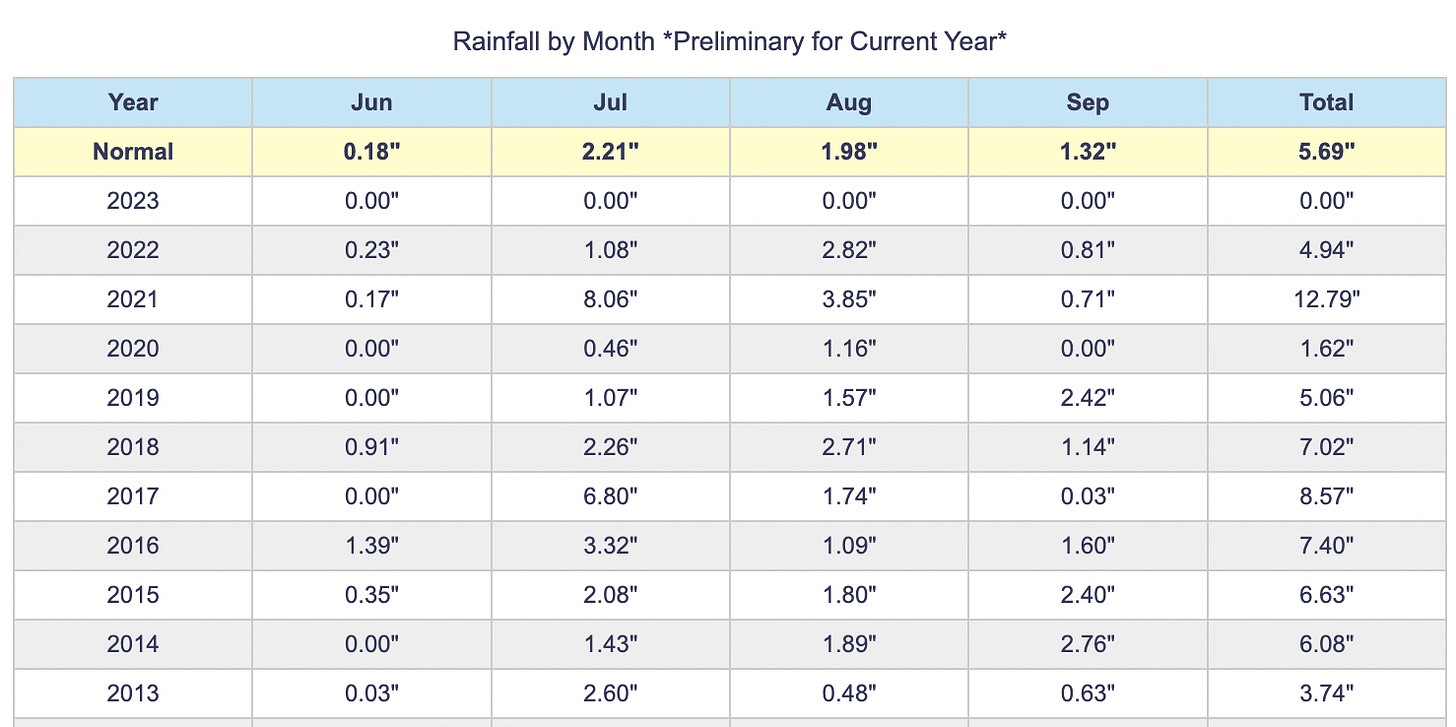

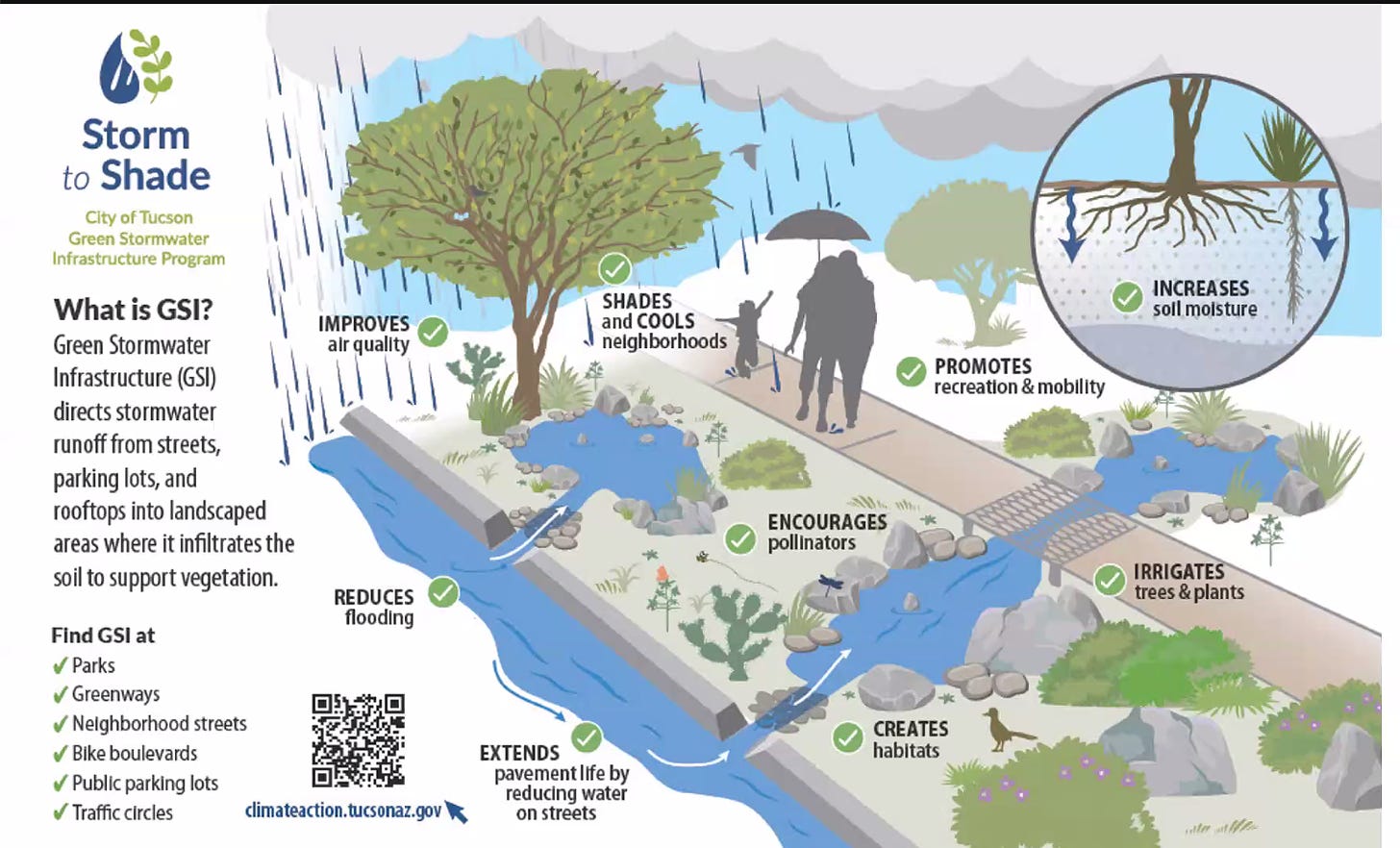
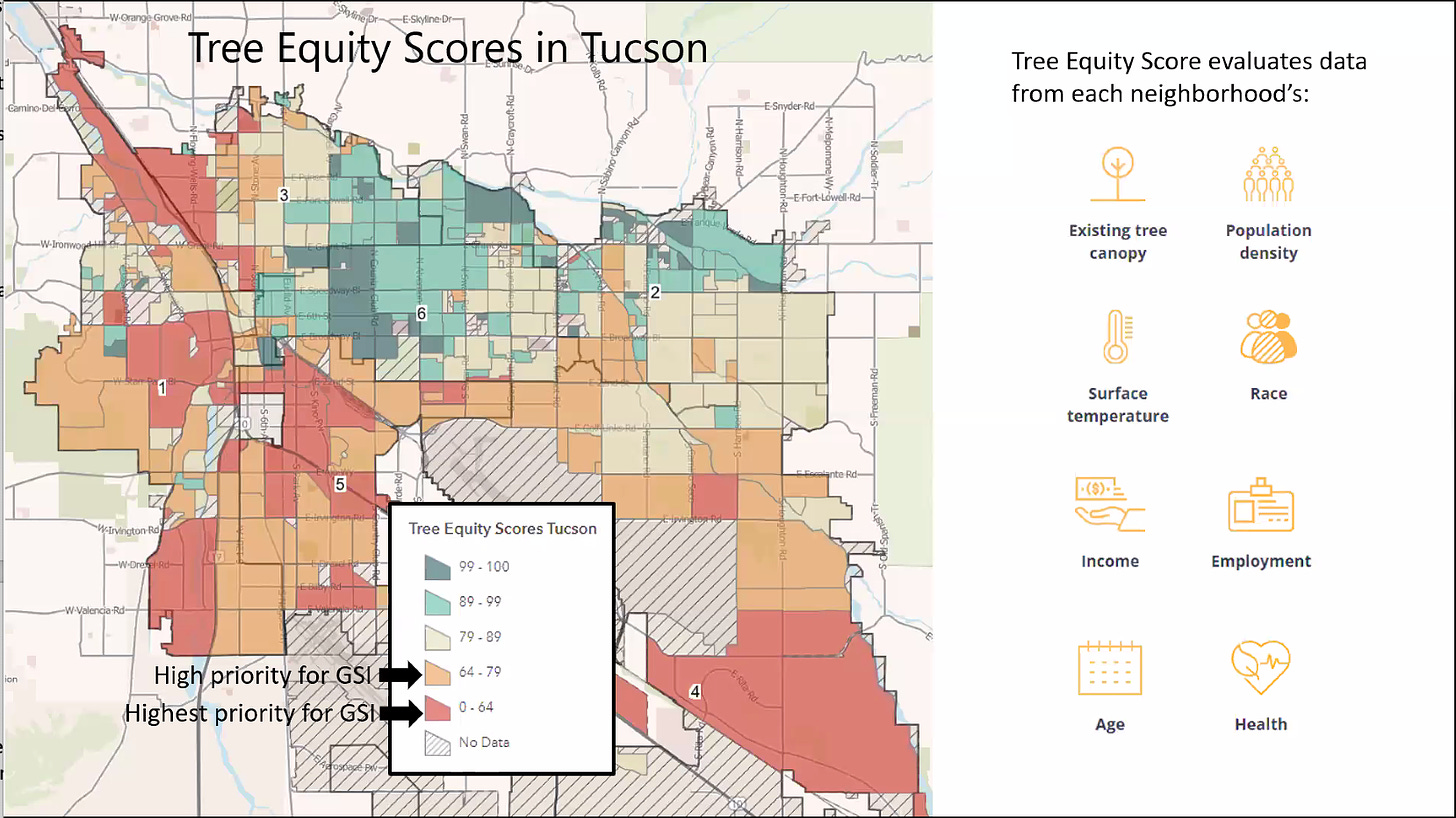
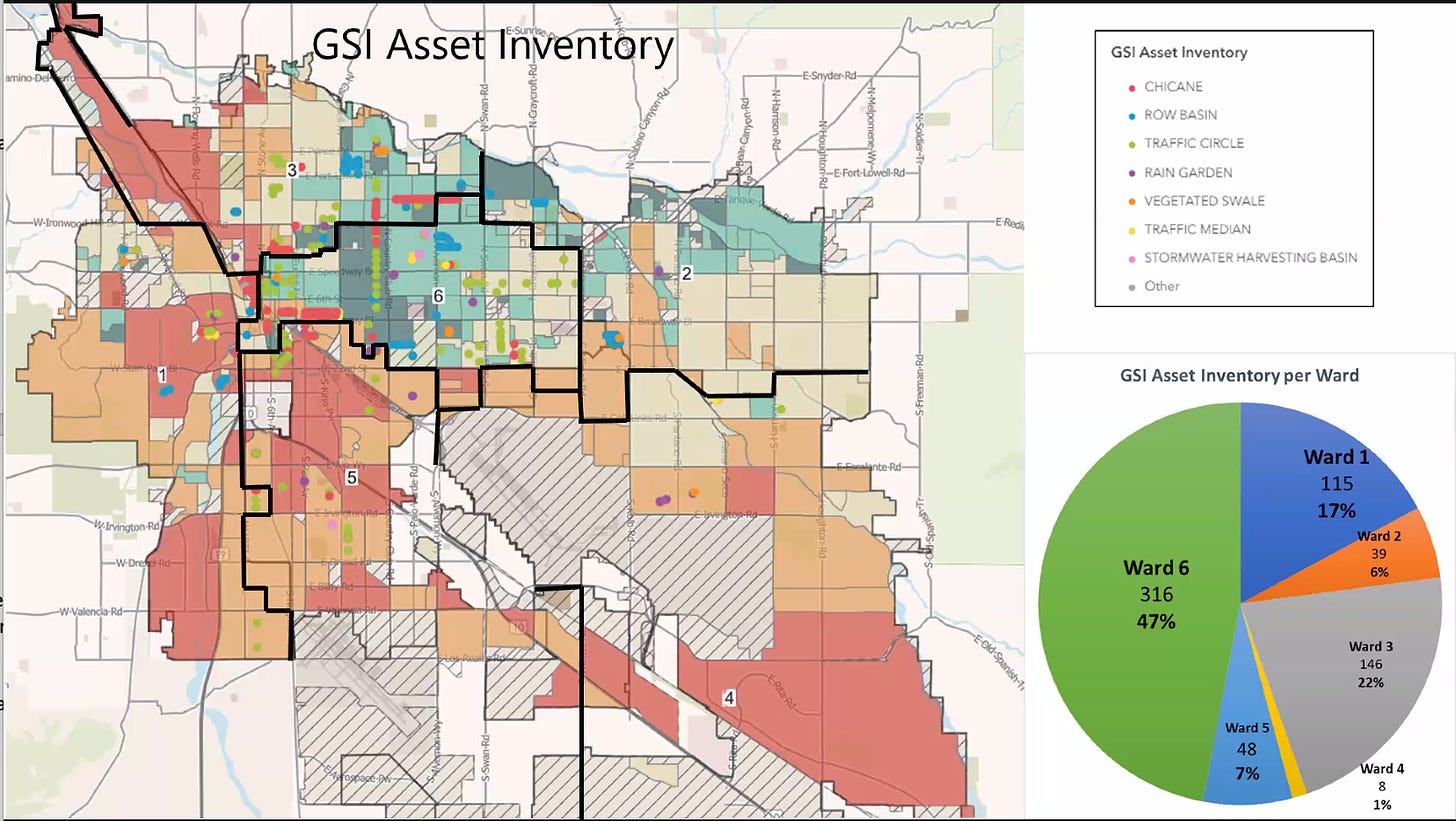
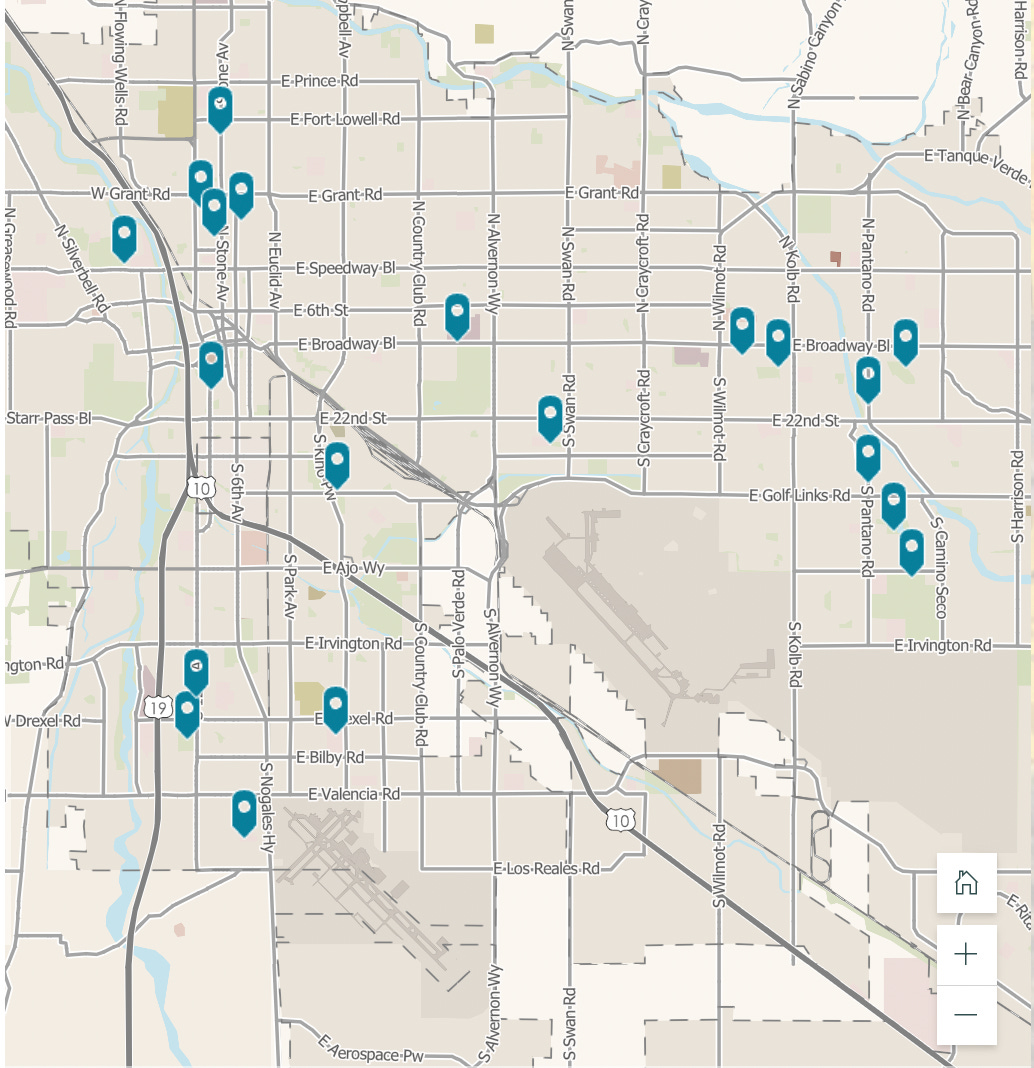

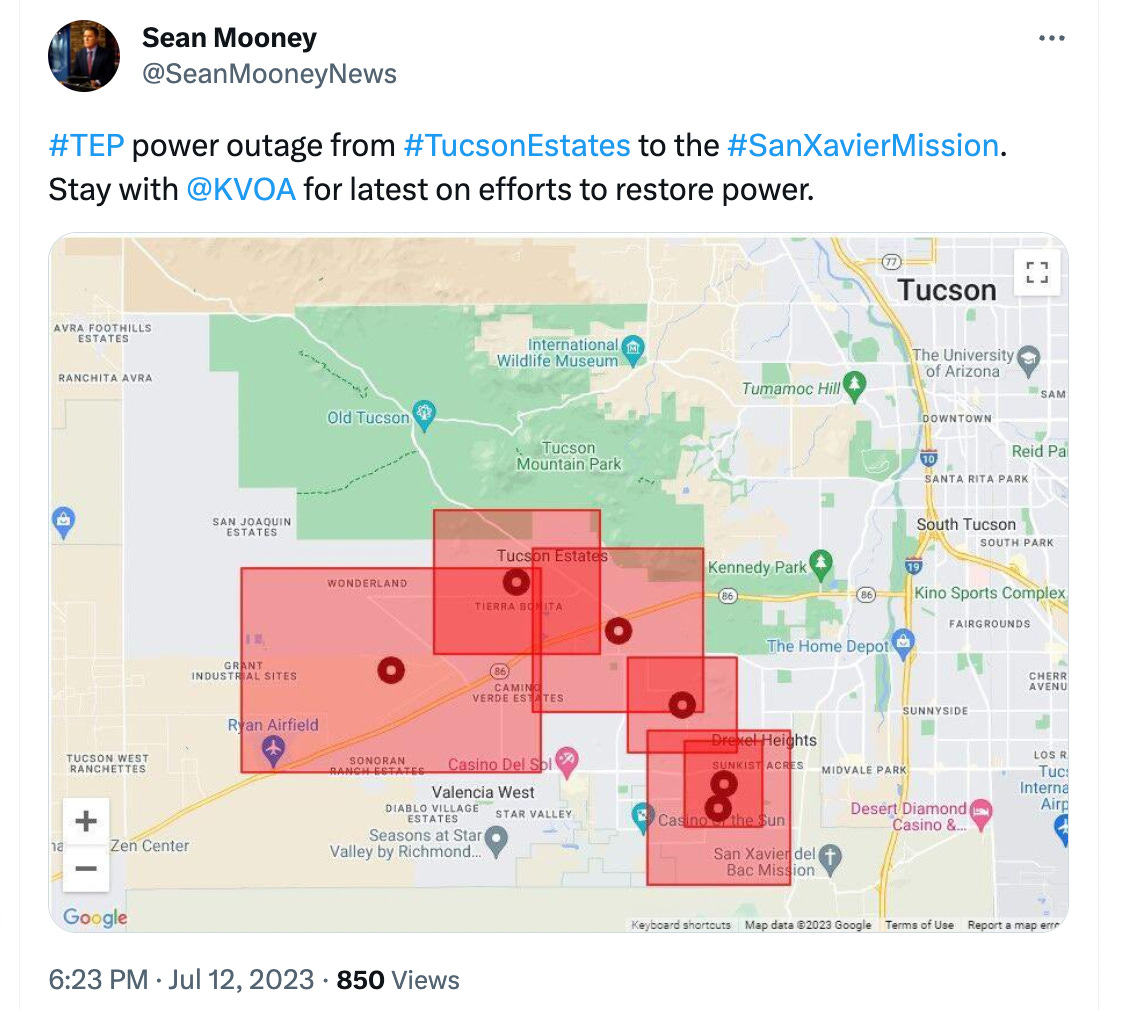

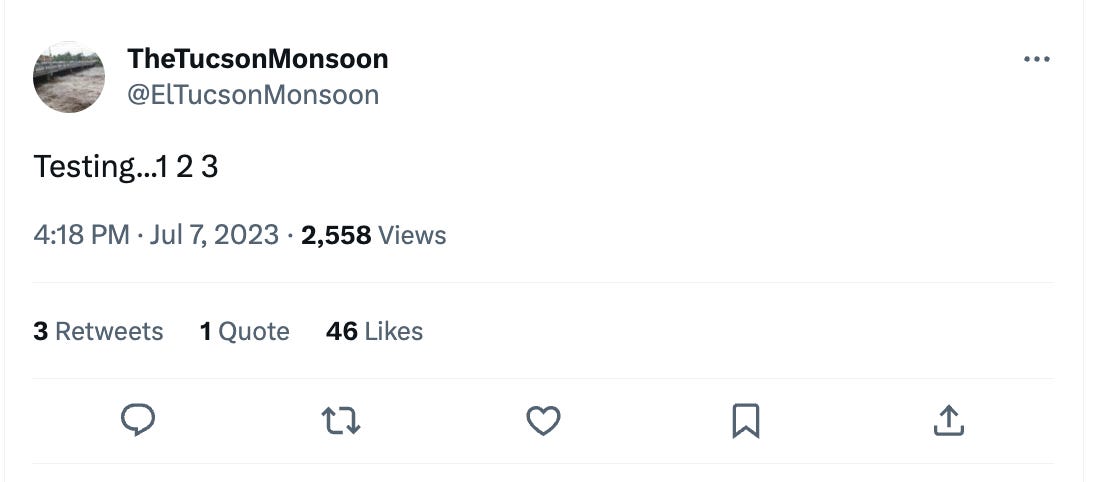
Here's an excellent essay from yesterday.
https://www.theatlantic.com/science/archive/2023/07/heat-dome-southwest-arizona/674689/
In light of the SAG-AFTRA strike, are any workers, including news workers, at local TV stations members of AFTRA? https://www.sagaftra.org/about